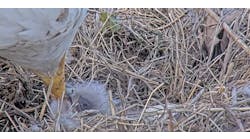The Sukhoi Superjet 100, the Russian jet that has gone missing in Indonesia, is a new passenger plane that Russia hopes will lift its civil aviation industry from a post-Soviet crisis.
The Superjet only made its first commercial flight last year. If a major accident is confirmed, it would be the first disaster to involve the aircraft, which is made by legendary Russian planemaker Sukhoi.
The plane is crucial to Russia's hopes of becoming a major player in the modern aviation market and improving its image in an industry scarred by frequent crashes of aging Soviet-era jets.
The Superjet was in Indonesia as part of a promotional tour of six Asian countries aimed at drumming up more orders, and any accident would deal a heavy blow to Russia's hopes of its becoming a widely used and trusted aircraft.
The mid-range Superjet airline carries up to 98 passengers for distances of up to 1,800 miles. It is a direct rival of similar aircraft produced by Brazil's Embraer and Canada's Bombardier.
So far, it is being flown by two airlines -- Russia's Aeroflot and Armenia's Armavia -- although orders have been confirmed with several more carriers. Its first commercial flight was operated by Armavia in April 2011, and Aeroflot followed later that year.
The demonstration flight in Indonesia was part of the plane's first-ever promotional tour, called "Asian Roadshow," aiming to build excitement about the plane with top test pilots in the cockpit.
The tour started May 3, taking in Kazakhstan, where President Nursultan Nazarbayev viewed the plane, and Pakistan. After Indonesia, it was due to go on to Laos and Vietnam.
Sky-High Hopes
Until the latest incident, Indonesia was set to become one of Sukhoi's largest clients for the aircraft.
In August 2011, Indonesian regional carrier PT Sky Aviation agreed to buy 12 of the planes and in 2010, the Kartika airline agreed to buy 30 Superjets. In both cases, the deliveries were to start this year.
The Superjet project is a joint venture between Sukhoi and Italy's Alenia Aeronautica, which is part of the aerospace and defense giant Finmeccanica.
Alenia owns 25% plus one share of Sukhoi Civil Aircraft, the Sukhoi unit developing the jet, as well as 51% of Superjet International, which is handling sales of the aircraft.
While the latest incident is the most dramatic by far, the plane has had a number of minor mishaps while being flown by Aeroflot, which came under heavy pressure from the government to add more Russian planes to its fleet.
Just three days ago, a Sukhoi SuperJet overran the runway on landing in the central Russian city of Kazan, although no one was injured, and in March, a plane cut short a scheduled flight due to problems with its undercarriage.
Aeroflot's first Sukhoi Superjet spent several weeks grounded after its delivery due to an air conditioning problem, while last December a problem with the chassis resulted in a Minsk-to-Moscow flying without passengers.
Sukhoi is a giant holding that traces its history back to the 1930s in the Soviet Union. It employs 26,000 people and is based in the remote Far Eastern city of Komsomolsk-on-Amur, also manufacturing military fighter jets.
Russia is notorious for aviation accidents, but deadly disasters in recent years have involved creaking old Soviet-made jets like the Tupolev and the Yak, aircraft that Aeroflot pointedly no longer uses.
Copyright Agence France-Presse, 2012


